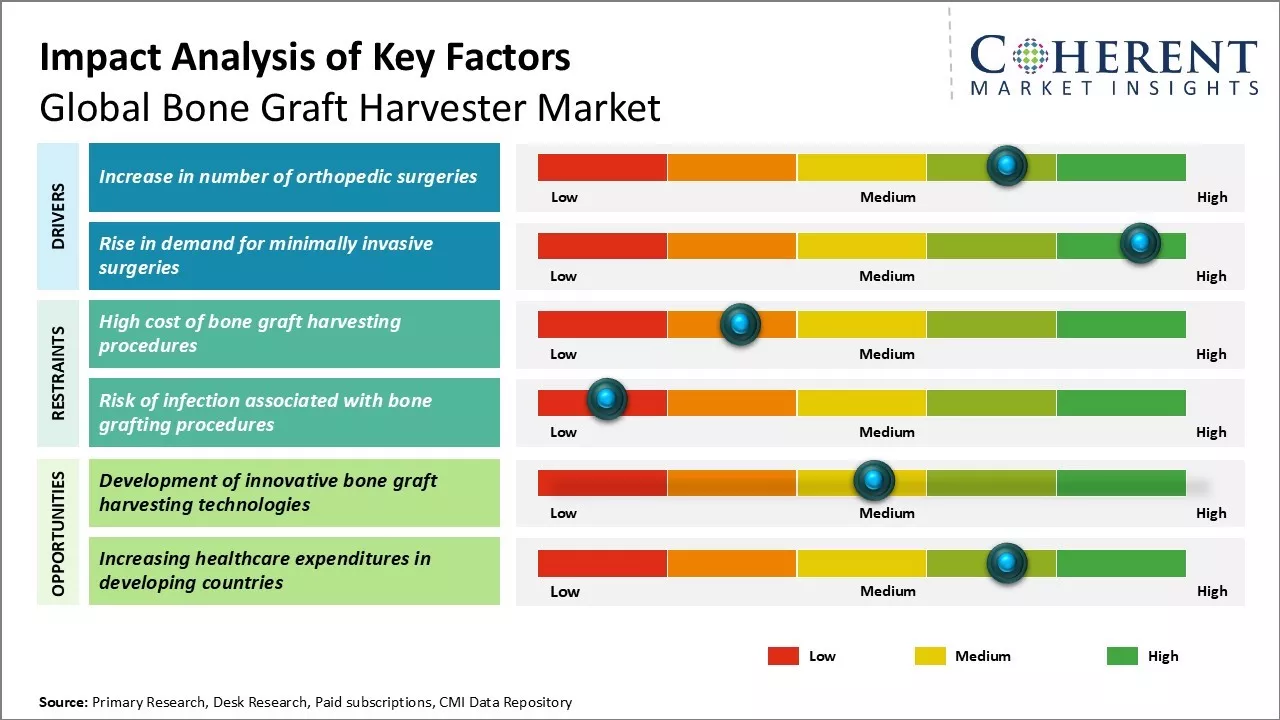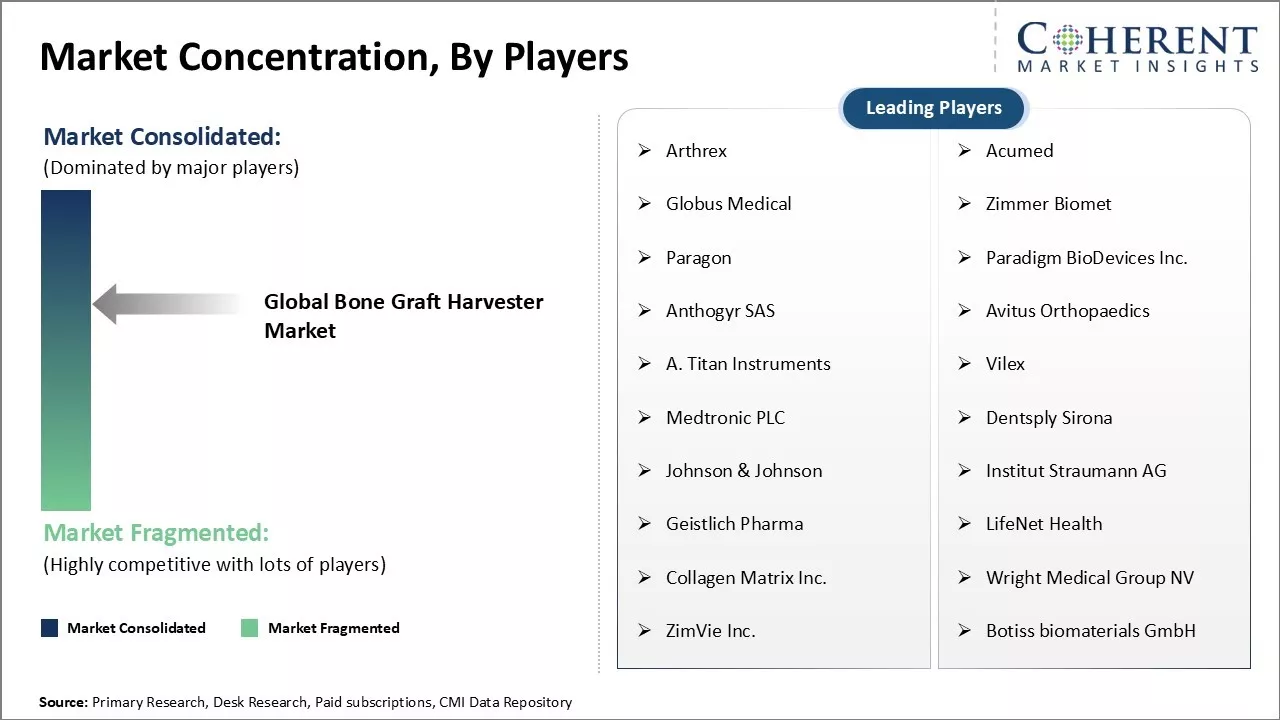Global bone graft harvester market is estimated to be valued at USD 14.10 Billion in 2024 and is expected to reach USD 21.11 Billion by 2031, exhibiting a compound annual growth rate (CAGR) of 5.9% from 2024 to 2031.

To learn more about this report, Request sample copy
Bone graft harvester is an instrument intended to remove graft material from the iliac crest or other donor sites. It is used for minimally invasive harvesting of cancellous bone and/or marrow. Bone graft harvesters help obtain bone graft with minimum invasion and discomfort to patients.
Increase in number of orthopedic surgeries
Global population is ageing rapidly due to advancements in healthcare and medical technologies. Older individuals are more prone to osteoarthritis, spinal disorders, trauma injuries and other such conditions that require orthopaedic interventions. As per estimates, over 200 million people suffer from osteoarthritis globally. With rising life expectancy, there will be increase in prevalence of orthopedic conditions. This can boost demand for various joint replacement and reconstructive surgeries significantly.
Knee and hip replacements are among the most commonly performed orthopaedic procedures. According to Clinical Studies, there has been 100% rise in the number of knee and hip replacement surgeries performed in the U.S. Growing occurrence of obesity and osteoporosis increases the risks of bone fractures and failures of existing implants or prostheses. This leads to higher revision surgery rates. More individuals opt for physically demanding lifestyle and participates in sports at an older age, which increases the chances of injuries requiring surgical intervention.
All these factors lead to increase in the volume of total joint arthroplasty and other complex orthopaedic procedures. Larger number of surgeries means greater utilization of ancillary devices and consumables required for performing them successfully. Bone grafts are an indispensable part of various spinal, trauma and reconstructive orthopaedic surgeries that are used for replacing missing or damaged bones and supporting new bone tissue growth. Thus, rising surgical caseload can boost demand for improved bone graft harvesting technologies and products.

To learn more about this report, Request sample copy
Rise in demand for minimally invasive surgeries
Patient preferences have evolved significantly in the recent decades. Individuals want surgical treatments that allow for faster recovery times, lesser complications, minimal scarring and improved cosmetic outcomes. These people want procedures performed by skilled surgeons using advanced precision techniques. This has led to huge demand for minimally invasive surgical approaches across various medical specialties including orthopaedics.
Minimally invasive techniques for performing joint replacements, vertebral corrections and fracture fixations through smaller incisions are gaining popularity. These are known to reduce postoperative pain, blood loss, hospital stay and return patients back to normal activities sooner. The benefits have made minimally invasive procedures the preferred choice for many surgeons as well as patients. Innovation in endoscopy and computer-assisted navigation systems have enabled precise sculpting and placement of grafts, implants and devices through small access points.
There has been huge adoption of minimally invasive orthopaedic procedures across developed markets but is still at a nascent phase in developing regions. As more physicians get trained in new techniques and patients experience the outcomes of early adopters, there will be huge demand. To facilitate minimal disruption and superior visualization inside narrow operative corridors during such surgeries, special bone harvesting systems suited for Endoscopic and Arthroscopic procedures are becoming necessary. Their demand will increase in tandem with wider acceptance of minimally invasive orthopaedics worldwide.
Reliable and efficient bone graft collection technologies play a key role in enabling orthopedic surgeons to cater to evolving patient needs and deliver quality minimally invasive treatments. This leads to huge demand for bone graft harvesters designed for applications in key MI specialties.
Joining thousands of companies around the world committed to making the Excellent Business Solutions.
View All Our Clients